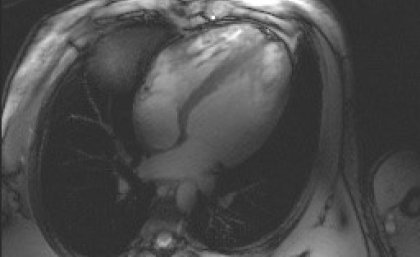
The University of Queensland is performing the Southern Hemisphere’s most advanced cardiac imaging, opening the way for improved diagnosis and treatment of heart disease.
UQ’s Centre for Advanced Imaging’s Associate Professor Markus Barth said the multi-million-dollar 7T whole-body human scanner – a flagship instrument of the National Imaging Facility (NIF) – installed last year had been upgraded and now provided still and moving images of the human heart.
“These images are a first for the Southern Hemisphere, and will be used by researchers investigating heart disease diagnosis and treatment,” he said.
The 7T magnetic resonance imaging (MRI) scanner was developed by Siemens.
Siemens scientist Dr Kieran O’Brien said it was the only such scanner in Australia that used eight independent radio frequency channels for transmission.
“This opens up a raft of opportunities, including extremely targeted images and more efficient and faster imaging methods,” he said.
“With partnerships like this, we combine the best technology with Australia’s brightest research minds.”
Associate Professor Barth, who is head of ultra-high field MRI research, said images and movies of the beating heart were acquired using the latest development in scanner and coil technology.
“The addition of this new equipment to the 7T scanner makes it a true whole body MRI, and the new coil allows targeted examination of parts of organs, with increased detail,” he said.
“This will enable the translation of new imaging methods to improve patient diagnosis.”
Brisbane based Cardiologist Dr Christian Hamilton-Craig said the scanner had potential to provide better definition and earlier detection of cardiac disorders and could provide high-resolution imaging of the hearts of patients who had suffered a heart attack.
“This will give us more accurate information to guide therapy, to measure the effect of medications, and to predict outcomes for patients with cardiovascular disorders, which remain the most common cause of death in our society,” Dr Hamilton-Craig said.
UQ collaborated with Germany-based company MRI.TOOLS to extend the capabilities of the scanner with a dedicated coil that enables the imaging of many parts of the human body.
MRI.TOOLS chief executive officer Professor Thoralf Niendorf said his company provided ground-breaking technology for imaging the heart at ultra-high field magnetic resonance.
UQ will collaborate with hospitals in Brisbane and regional Queensland to investigate cardiac imaging for diseases that could remain undetected using conventional scanners.
Media: Centre for Advanced Imaging, Rebecca Osborne, +61 7 3365 4235, Rebecca.osborne@cai.uq.edu.au.
About the Centre for Advanced Imaging:
The CAI represents a major enhancement of the imaging capabilities at The University of Queensland. It brings together the skills of a critical mass of researchers in a new five-story facility which houses a cyclotron, ultra-high field human MRI instrumentation and other state-of-the-art research imaging instruments. Radiotracer development and production in-house supports leading edge molecular imaging programs using CAI’s PET-CT and MR-PET facilities. It is the only facility of its type in Australia and one of only a handful in the world. UQ is the lead institution in the National Imaging Facility (NIF; http://www.anif.org.au/). The CAI has been funded by the Commonwealth Government through the National Collaborative Research Infrastructure Strategy (NCRIS) and the Education Investment Fund (EIF) and by the Queensland Government.
.jpg)









